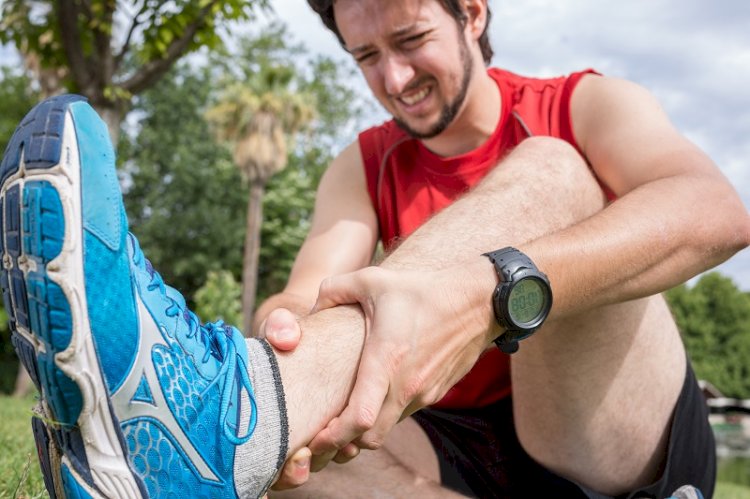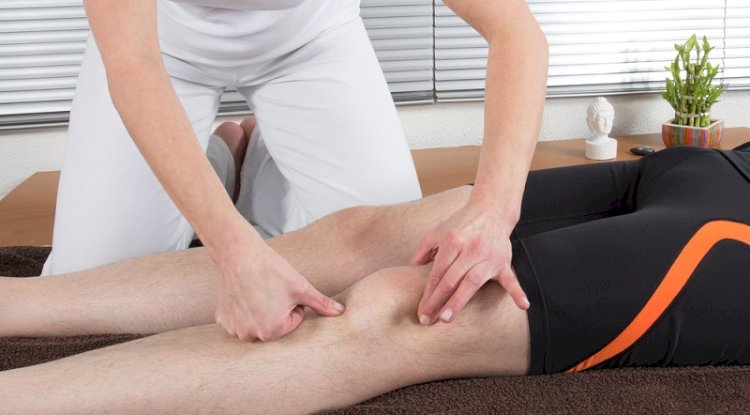Comprehensive Guide to Sports Injuries: Prevention, Treatment, and Recovery

If you're an athlete, weekend warrior, or even just someone who enjoys breaking a sweat, sports injuries can be an unfortunate reality. Whether it's a sprained ankle, a torn ligament, or a broken bone, these injuries can put a damper on your physical activity and even impact your daily life. In this comprehensive guide, we'll explore the various types of sports injuries, how to prevent them, the best treatment options, and the key steps to recovery. So, let's dive in and get you back in the game!
1. Types of Sports Injuries
Sports injuries can be broadly categorized into acute and overuse injuries. Acute injuries are sudden and often caused by a specific, traumatic event, while overuse injuries occur gradually over time due to repetitive stress on a particular body part. Here are some common sports injuries:
- Muscle strains: Overstretching or tearing of muscle fibers, often occurring in the hamstring, quadriceps, or calf muscles
- Sprains: Stretching or tearing of ligaments, commonly affecting the ankle, knee, or wrist
- Dislocations: When a bone slips out of its normal position within a joint
- Fractures: Broken bones, which can be either complete breaks or partial cracks
2. Injury Prevention
While some sports injuries are unavoidable, there are steps you can take to minimize your risk. Here are some key preventive measures:
- Warm-up: Warming up prepares your body for physical activity by increasing blood flow and flexibility. A proper warm-up should include dynamic stretches and light aerobic exercises.
- Cool down: Cool down allows your body to gradually return to its resting state, which can help prevent injury. A cool down should include static stretches and light aerobic exercises.
- Proper technique: Learning and practicing the correct technique for your sport or activity can help to reduce strain on your muscles and joints.
- Protective gear: Wearing appropriate protective gear, such as helmets, pads, and proper footwear, can help to prevent injuries.
- Strengthening exercises: Regular strength training can help to build and maintain strong muscles, which can improve stability and protect against injury.
- Rest: Giving your body ample time to recover between workouts can help to prevent overuse injuries.

3. Treatment Options
The appropriate treatment for a sports injury will depend on the type and severity of the injury. However, some general guidelines include:
- RICE method: Rest, Ice, Compression, and Elevation are the cornerstones of initial injury treatment. This method can help to reduce pain, swelling, and inflammation.
- Pain relief: Over-the-counter pain medications, such as ibuprofen or acetaminophen, can help to alleviate pain and reduce inflammation.
- Physical therapy: Working with a physical therapist can be beneficial for many sports injuries, as they can develop a targeted treatment plan to address your specific needs.
- Surgery: In some cases, surgery may be necessary to repair a severe injury, such as a torn ligament or a broken bone.
4. Recovery and Rehabilitation
The road to recovery from a sports injury can be challenging, but it's essential to follow a structured rehabilitation plan to ensure the best possible outcome. Some key components of a successful rehabilitation program include:
- Gradual progression: Avoid returning to your pre-injury activity level too quickly, as this can lead to re-injury. Instead, gradually increase the intensity and duration of your workouts as your body heals.
- Strengthening exercises: Focus on rebuilding strength in the injured area, as well as surrounding muscles, to help improve stability and prevent future injuries.
- Flexibility exercises: Stretching can help to restore and maintain flexibility in the injured area, which can reduce the risk of re-injury.
- Balance and proprioception exercises: Improving your balance and body awareness can help to prevent falls and other accidents that can lead to injury.
5. The Importance of Nutrition and Hydration
Proper nutrition and hydration play a crucial role in injury prevention and recovery. Here are some key considerations:
- Balanced diet: Eating a well-rounded diet, rich in fruits, vegetables, lean protein, and whole grains, can provide your body with the nutrients it needs to recover from injuries.
- Adequate hydration: Staying well-hydrated is essential for overall health and can help to prevent muscle cramps, fatigue, and other issues that can contribute to injuries.
- Supplements: In some cases, taking supplements – such as calcium, vitamin D, or protein – may be beneficial for recovery and injury prevention. However, always consult with a healthcare professional before starting any new supplement regimen.
6. Rest and Recovery
While it's important to push yourself in your training, it's equally important to recognize the role of rest and recovery in preventing sports injuries. Some tips for ensuring adequate rest include:
- Listen to your body: If you're feeling excessively fatigued or sore, it may be a sign that your body needs more time to recover.
- Schedule rest days: Incorporate regular rest days into your training schedule to give your body time to heal and rebuild.
- Sleep: Aim for 7-9 hours of sleep per night, as sleep is essential for muscle repair and overall recovery.
Conclusion
Sports injuries can be a frustrating setback, but with the right approach to prevention, treatment, and recovery, you can minimize your risk and bounce back stronger than ever. By incorporating a well-rounded training program – including warm-ups, cool-downs, proper technique, strengthening exercises, and rest – along with proper nutrition and hydration, you'll be well on your way to staying injury-free and enjoying your favorite activities for years to come.
Share
What's Your Reaction?
 Like
0
Like
0
 Dislike
0
Dislike
0
 Love
0
Love
0
 Funny
0
Funny
0
 Angry
0
Angry
0
 Sad
0
Sad
0
 Wow
0
Wow
0















